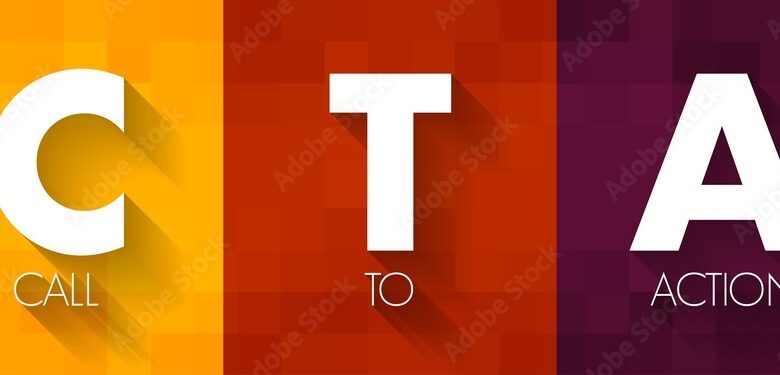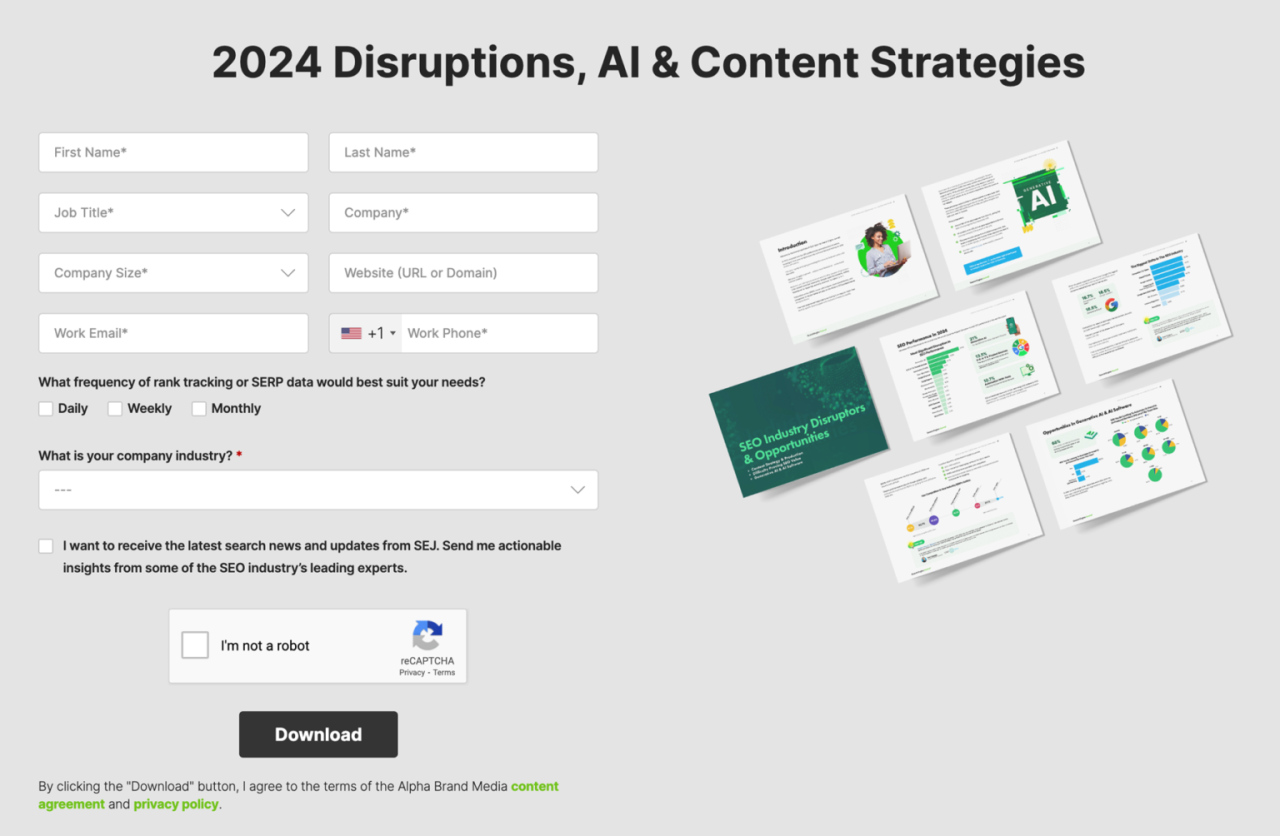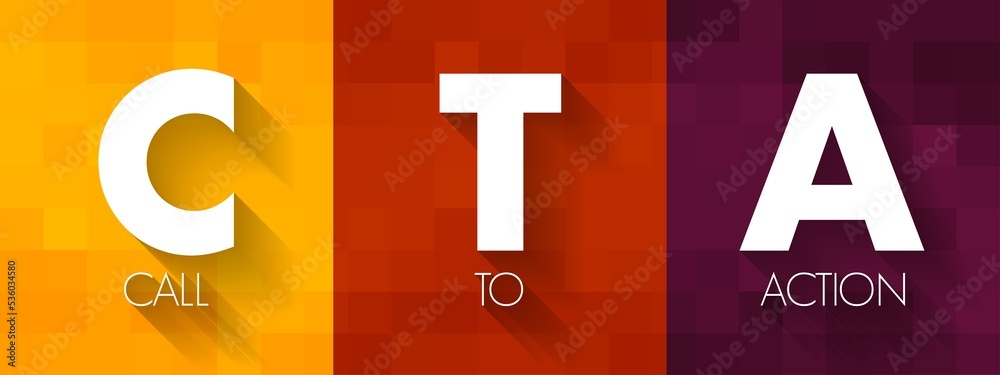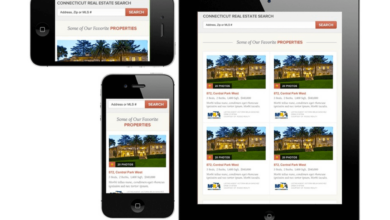
CTA Call to Action Marketing Explained
CTA call to action marketing explained dives deep into the world of compelling calls to action. From crafting persuasive button copy to optimizing placement and A/B testing, this guide covers every essential aspect of maximizing your marketing impact. Learn how to transform passive visitors into engaged customers through strategic design and targeted messaging.
We’ll explore different types of CTAs, from simple buttons to complex forms, and examine their effectiveness across various marketing channels like email, social media, and website landing pages. Understanding how to align your CTAs with your target audience and marketing goals is key to driving conversions. Plus, we’ll look at the vital role of user experience (UX) and how to integrate CTAs seamlessly to improve user engagement and satisfaction.
Defining Call-to-Action (CTA)
A call-to-action (CTA) is a crucial element in marketing that prompts a specific response from your audience. It’s the instruction or directive that guides users towards a desired action, like making a purchase, signing up for a newsletter, or downloading a resource. Effective CTAs are clear, concise, and compelling, encouraging users to take the next step in the marketing funnel.Strong CTAs are carefully crafted to resonate with the target audience and align with the overall marketing goals.
They are more than just words; they are strategic directives that drive conversions and improve marketing ROI.
Key Components of a Strong CTA
Understanding the elements of a strong CTA is paramount to its effectiveness. A clear directive, an enticing value proposition, and an appropriate visual design all contribute to a powerful CTA. These elements work together to create a compelling message that resonates with the user and encourages them to take the desired action.
- Clear Directive: The CTA should explicitly state the desired action. Phrases like “Buy Now,” “Learn More,” or “Sign Up” leave no room for ambiguity. Avoid vague language, ensuring the user understands precisely what is expected of them.
- Enticing Value Proposition: Highlight the benefits of taking the action. What does the user gain by clicking the button? For example, “Download our free ebook and unlock the secrets to successful social media marketing.” This not only tells them what to do but also what they will get from doing it.
- Compelling Visual Design: The visual presentation of the CTA is vital. Use contrasting colors, attractive fonts, and strategically placed buttons to draw attention. Ensure the CTA element stands out from the surrounding content, without being overwhelming or distracting.
Purpose of CTAs in the Marketing Funnel
CTAs play a critical role in guiding users through the marketing funnel. Each stage requires a different approach, from attracting initial interest to closing a sale. At each stage, the CTA should align with the user’s needs and expectations.
- Awareness Stage: In this stage, the goal is to capture attention and create interest. CTAs should focus on providing valuable information, encouraging engagement, and driving traffic to the website. Examples include “Learn More,” “Download a White Paper,” or “Watch a Demo.”
- Consideration Stage: Users in this stage are actively researching and comparing options. CTAs should emphasize product features, benefits, and value propositions. Examples include “Request a Quote,” “Explore Our Plans,” or “View Case Studies.”
- Decision Stage: At this point, users are ready to make a decision. CTAs should focus on driving conversions, offering incentives, and creating a sense of urgency. Examples include “Add to Cart,” “Buy Now,” or “Start Your Free Trial.”
Different Types of CTAs
Various forms of CTAs can be employed, each with its strengths and weaknesses. The choice depends on the specific goals and target audience.
| Type | Description | Example |
|---|---|---|
| Buttons | Visual elements that encourage immediate action. | “Buy Now,” “Sign Up Free,” “Download Now” |
| Links | Text links that direct users to another page. | “Learn More About Our Services,” “Read Our Blog Post” |
| Forms | Gather user information to collect leads or register users. | “Subscribe to Our Newsletter,” “Request a Demo” |
Types of CTAs
Crafting compelling calls to action (CTAs) is crucial for driving conversions and achieving marketing objectives. A well-designed CTA encourages users to take a specific desired action, such as making a purchase, signing up for a newsletter, or downloading a resource. Understanding the various types of CTAs and their optimal use across different channels is key to maximizing their effectiveness.Effective CTAs are more than just words; they’re carefully designed prompts that nudge users towards desired outcomes.
Understanding call-to-action (CTA) marketing is key to boosting engagement. A well-placed CTA can drive traffic to your site, increase sales, and generally make your marketing efforts more effective. Want to amplify your reach on Instagram? Learning how to repost on Instagram, like the two easy ways shown in this guide how to repost on instagram two easy ways to reshare , is a great way to share valuable content and further leverage your CTA strategy.
Ultimately, strong CTAs and clever reposting will create a powerful marketing synergy.
This requires a deep understanding of the target audience and the specific context of each marketing channel. Different platforms require different approaches, and a one-size-fits-all CTA strategy rarely works.
Call-to-Action Types Across Channels
Understanding the nuances of each channel is critical to crafting CTAs that resonate with users. A CTA designed for a social media post should differ from one used on a landing page. This requires tailoring the message and style to match the platform’s unique characteristics.
Email Marketing CTAs
Email marketing offers a direct line to your audience. Effective email CTAs are concise, clear, and visually engaging. They should be strategically placed within the email body, often in the form of buttons or links. A strong call-to-action button stands out from the surrounding text, using contrasting colors and clear, action-oriented language.
Understanding CTAs, or calls to action, is key in marketing. They’re the little nudges that encourage your audience to take a desired step, like buying a product or signing up for a newsletter. A great way to implement effective CTAs is by connecting with potential clients on LinkedIn. Using LinkedIn strategically for B2B lead generation, like detailed in this guide on linkedin for b2b lead generation connect with prospects , can help you target the right people and create personalized CTAs that convert.
Ultimately, the more effective your CTAs, the more successful your marketing efforts will be.
- Clear Action Verbs: Use action verbs like “Shop Now,” “Learn More,” “Download Now,” or “Sign Up.” These verbs convey a sense of urgency and encourage immediate action.
- Visually Appealing Buttons: Design buttons that stand out from the email’s overall design. Use contrasting colors and clear fonts to enhance visibility.
- Strategic Placement: Place CTAs in the email body, not just at the end. This improves visibility and encourages clicks.
Social Media CTAs
Social media CTAs should be brief, engaging, and aligned with the platform’s conversational tone. They should encourage interaction and often use a conversational style.
- Engaging Questions: Pose questions that encourage interaction and engagement, like “What’s your favorite [product]? #AskUsAnything”
- Short, Actionable Phrases: Keep CTAs short and sweet, using phrases like “Shop Now,” “Learn More,” or “Visit Our Site.” These phrases should be directly actionable.
- Visual Appeal: Use high-quality images and videos to complement your message and make your CTAs more attractive.
Website Landing Page CTAs
Landing pages are designed for a single purpose: driving conversions. CTAs on landing pages should be large, prominent, and easily visible. They need to be directly related to the page’s content.
- Large, Prominent Buttons: Use large, contrasting buttons that are easy to click and stand out from the page’s layout. Use color to attract attention.
- Clear Value Proposition: Clearly state the benefit of taking the action, such as “Get your free trial today” or “Claim your exclusive discount.” The benefits should be easily understandable.
- Single Focused Goal: Each landing page should have a single, focused goal. The CTA should align with this goal.
Effective CTA Examples by Channel
| Channel | CTA Example | Explanation |
|---|---|---|
| “Download Your Free Guide Now” | Clear, concise, and action-oriented. | |
| Social Media | “Learn how to [skill] in 5 steps! Link in bio.” | Engaging, informative, and promotes interaction. |
| Website Landing Page | “Start Your Free Trial Today” (large, prominent button) | Prominent, clear, and directly related to the page’s purpose. |
Elements of a Successful CTA: Cta Call To Action Marketing Explained

Crafting a compelling call-to-action (CTA) is crucial for driving conversions. A well-designed CTA encourages users to take the desired action, whether it’s making a purchase, signing up for a newsletter, or requesting a demo. This section delves into the key elements of a successful CTA, from crafting persuasive language to strategically placing the button.A strong CTA is more than just a button; it’s a carefully orchestrated blend of words, visuals, and positioning.
Understanding the crucial elements ensures your CTA effectively communicates the value proposition and motivates users to act. Let’s examine the components that make a CTA truly effective.
Compelling CTA Button Language
Crafting persuasive language for your CTA button is paramount. The language needs to clearly communicate the value proposition and motivate users to take action. Avoid jargon or complex phrasing. Instead, use simple, direct language that speaks directly to the user’s needs and desires.Examples of effective CTA button text:
- Get Started Now
- Claim Your Free Trial
- Download the Report
- Book a Consultation
- Shop Now
These examples are concise, action-oriented, and clearly communicate the desired outcome. They use strong verbs and avoid unnecessary words. The words used directly address the user’s benefit, making the call to action irresistible.
Using Strong Verbs and Concise Language
Strong verbs and concise language are vital for a compelling CTA. Words like “start,” “get,” “download,” and “book” create a sense of immediacy and action. Eliminate any unnecessary words or phrases, focusing on clarity and impact. The goal is to make the CTA button as clear and enticing as possible.Examples of strong verbs used in CTAs:
- Start Your Free Trial
- Get Your Exclusive Discount
- Download the eBook Now
- Book Your Appointment Today
Using strong verbs directly engages the user and emphasizes the action being requested.
CTA Template Structure
A well-structured CTA template considers the text, color, and placement of the button. The text should be clear, concise, and action-oriented. The color should contrast with the background to ensure high visibility. Placement should be strategic, ideally where it’s easily seen and accessible.
| Element | Description | Example |
|---|---|---|
| Text | Action-oriented and clear; avoids jargon. | “Get Your Free Guide” |
| Color | High contrast with the background for visibility; aligns with brand identity. | Bright orange button on a white background |
| Placement | Prominent location; easily accessible; above the fold whenever possible. | Centered on the page, above the fold |
A well-designed CTA button is more than just a simple button. It’s a strategic element that guides users towards a desired action. The text, color, and placement all contribute to its effectiveness.
Measuring CTA Performance
Knowing how your calls-to-action (CTAs) are performing is crucial for optimizing your marketing campaigns. Tracking key metrics allows you to understand what’s working, what’s not, and ultimately, how to improve conversions. This data-driven approach ensures your marketing efforts are effective and efficient.Understanding the effectiveness of your CTAs isn’t just about knowing if they’re being clicked; it’s about measuring the entire journey from initial exposure to a desired outcome.
This involves scrutinizing every step, from the initial impression of the CTA to the final conversion, allowing for a complete analysis of its performance. Analyzing click-through rates and conversion rates are fundamental in this process.
Key Metrics for CTA Effectiveness
Understanding which metrics to track is essential for a comprehensive evaluation of CTA performance. Key metrics include click-through rate (CTR), conversion rate, bounce rate, and cost per acquisition (CPA). These metrics provide a comprehensive view of user engagement and the overall efficiency of your marketing campaigns.
Analyzing Click-Through Rates (CTR)
Click-through rate (CTR) measures the percentage of users who click on a CTA button after viewing it. A high CTR indicates that your CTA is attracting attention and prompting engagement. A low CTR, on the other hand, might suggest that your CTA isn’t compelling enough or that it’s not clearly visible on the page. For example, a landing page with a large, contrasting CTA button placed prominently above the fold often yields a higher CTR compared to a smaller, less noticeable CTA.
Analyzing Conversion Rates
Conversion rate measures the percentage of users who complete a desired action after clicking on a CTA. This action could be anything from making a purchase to filling out a form. Conversion rates are crucial for evaluating the overall effectiveness of your marketing funnel. A low conversion rate could indicate issues with the landing page, the checkout process, or the overall user experience.
For instance, a high CTR but a low conversion rate might suggest the landing page isn’t optimized for conversions.
Tools for Measuring CTA Performance
The following table Artikels various tools that can be used to measure CTA performance.
| Tool | Description | Strengths | Weaknesses |
|---|---|---|---|
| Google Analytics | A comprehensive web analytics platform that provides in-depth insights into website traffic and user behavior. | Free, detailed data, robust features. | Requires some technical understanding to set up properly. |
| Hotjar | A user behavior analytics tool that provides heatmaps, recordings, and surveys to understand user interactions with your website. | Visualizes user behavior, helps identify areas for improvement. | Paid service, requires a certain level of technical skill. |
| Crazy Egg | Provides heatmaps, scrollmaps, and other visual analytics to understand user behavior. | Easy-to-understand visualizations. | Limited data compared to other tools. |
| VWO (Visual Website Optimizer) | A website optimization platform that allows A/B testing of CTAs and other website elements. | A/B testing capabilities, significant for optimizing CTA performance. | Paid service, requires technical understanding. |
Optimizing CTAs for Better Results
Using data to optimize CTAs involves understanding the patterns and trends in the metrics you’ve tracked. For instance, if a specific CTA button has a significantly lower CTR than others, it’s time to review its design, placement, and copy. This data-driven approach helps in identifying areas for improvement, leading to a more effective marketing strategy. By examining click-through rates, conversion rates, and user behavior, you can gain valuable insights into the effectiveness of your CTAs and make necessary adjustments to improve performance.
A/B testing various elements of the CTA, such as text, color, and placement, is a critical component of optimization. By systematically testing different versions of your CTAs, you can identify the most effective option and significantly improve conversions.
A/B Testing CTAs
A/B testing is a cornerstone of effective marketing. By systematically comparing different versions of your call-to-action (CTA), you can pinpoint what resonates best with your audience and optimize conversions. This iterative approach allows you to continuously improve your campaigns and achieve better results over time. Crucially, A/B testing CTAs isn’t just about trying different colors or button shapes; it’s about understanding the psychological and behavioral factors that drive user decisions.Understanding how users interact with your website and what influences their choices is critical for maximizing the impact of your CTAs.
This involves analyzing not just the immediate response to a CTA, but also the long-term effects on customer engagement and loyalty.
Methods for Conducting A/B Tests
A/B testing CTAs requires a structured approach to ensure valid results. There are several methods for conducting these tests, each with its own strengths and weaknesses. A key aspect is randomization, ensuring that the different versions of the CTA are presented to a statistically representative sample of users. This mitigates the impact of external factors and ensures a fair comparison.
Selecting Relevant Variables for Testing
Choosing the right variables to test is crucial for focusing your efforts and avoiding wasted resources. This involves understanding your target audience and their motivations. Factors like the language used in the CTA, the visual design (including color, font, and imagery), and the specific action encouraged can all be tested. For instance, “Buy Now” versus “Learn More” could drastically impact click-through rates.
The location of the CTA on the page, the size of the button, and even the use of different calls to action (e.g., a coupon or a limited-time offer) can significantly affect user behavior.
Controlling for Other Variables During Testing
To ensure that the observed differences in performance are directly attributable to the CTA variations, it’s vital to control for other variables that might influence the results. This includes maintaining consistent website elements like layout, navigation, and other CTAs across all test groups. Maintaining a consistent user experience across different variations minimizes the impact of extraneous factors on the outcome of the test.
Analyzing the Results of A/B Tests on CTAs
Analyzing the results of an A/B test involves more than simply comparing click-through rates. Consider metrics like conversion rates, time spent on the page, and bounce rates. These comprehensive metrics offer a more nuanced understanding of how different CTAs impact user behavior.Using statistical significance testing is essential for determining whether the observed differences between the variations are statistically meaningful or simply due to chance.
A statistically significant result indicates a high likelihood that the observed difference in performance is not a random fluctuation. A common method for evaluating statistical significance is the use of a p-value. For example, a p-value of less than 0.05 is often considered statistically significant, indicating a 95% confidence level that the observed difference is not due to chance.
Best Practices for CTAs

Crafting a compelling call-to-action (CTA) is crucial for driving conversions and achieving marketing objectives. A well-designed CTA can turn passive website visitors into active customers, boosting sales and fostering engagement. Effective CTAs are strategically placed and clearly communicate the desired action, making them a cornerstone of any successful marketing campaign.Beyond simply stating what you want users to do, the best CTAs create a sense of urgency and desirability, motivating visitors to take the desired step.
This involves understanding your target audience and tailoring your message to resonate with their needs and motivations.
Designing Effective Visual Elements
Visual elements play a significant role in capturing attention and conveying the desired action. High-quality images and icons can significantly enhance the appeal of a CTA, making it more visually engaging and memorable.
- Color Psychology: Utilizing colors that evoke the desired emotion and align with your brand identity is crucial. For example, a vibrant green button might signify growth and prosperity, while a bold red button could suggest urgency. Understanding the psychological impact of colors can significantly influence user engagement.
- Iconography: Icons can quickly communicate the action associated with the CTA, particularly when combined with text. A shopping cart icon, for instance, immediately suggests purchasing. Icons should be clear, concise, and relevant to the CTA to avoid ambiguity.
- Whitespace: Effective use of whitespace can enhance readability and visual appeal. Avoid cluttering the CTA with excessive text or graphics. Proper spacing around the button and related elements makes the CTA more prominent and easier to interact with.
Crafting Clear and Concise Messaging
Clear and concise messaging is paramount for effective CTAs. Avoid jargon or overly complex language that might confuse or deter potential customers. The message should be easily understood and should immediately convey the value proposition.
- Action Verbs: Using strong action verbs like “Download,” “Sign Up,” “Learn More,” or “Shop Now” directly encourages users to take the desired action.
- Value Proposition: Highlight the benefits of taking the action. Instead of just “Buy Now,” consider “Buy Now and Get Free Shipping.” Emphasizing the value proposition increases the appeal of the CTA.
- Urgency and Scarcity: A sense of urgency can incentivize immediate action. Using phrases like “Limited-time offer,” “Only 24 hours left,” or “While supplies last” can drive conversions by creating a sense of urgency.
Examples of Well-Designed CTAs
- E-commerce Websites: Many e-commerce sites use visually appealing buttons with clear calls to action such as “Add to Cart,” “Buy Now,” or “View Details.” The use of vibrant colors, prominent placement, and concise messaging enhances the conversion rate.
- Software Companies: Software companies frequently utilize buttons with phrases like “Request a Demo,” “Start Free Trial,” or “Get Started.” These CTAs are often prominent, clearly visible, and located strategically on the page to guide users towards the desired action.
- Educational Platforms: Educational platforms might employ CTAs such as “Enroll Now,” “Register for Course,” or “View Syllabus.” These buttons are often highlighted with distinct colors and placements, making them stand out from other elements.
Examples of CTAs Across Different Industries
Crafting compelling calls-to-action (CTAs) is crucial for driving desired outcomes, whether it’s generating leads, boosting sales, or encouraging donations. Understanding how to tailor CTAs to specific industries and target audiences is key to maximizing their effectiveness. This section delves into real-world examples, demonstrating how different industries utilize CTAs to achieve various marketing goals.Effective CTAs are not one-size-fits-all. Their design, language, and positioning must resonate with the target audience’s needs and motivations within a specific industry context.
This section provides insights into adapting CTAs for various industries and goals.
E-commerce CTAs
E-commerce businesses heavily rely on CTAs to drive conversions. Clear and concise CTAs are vital to guiding customers through the purchase process. Examples include “Add to Cart,” “Buy Now,” “View Details,” “Shop Now,” and “Learn More.” These should be strategically placed throughout the website, including product pages, shopping carts, and checkout pages. A strong CTA should be visually distinct, easily noticeable, and directly linked to the desired action.
For example, a “Buy Now” button in bright, contrasting colors against a product image will be more likely to capture attention.
SaaS CTAs
Software-as-a-service (SaaS) companies use CTAs to capture leads and encourage trials. They often use CTAs like “Request a Demo,” “Start Free Trial,” “Get a Quote,” “Contact Us,” and “Learn More About [Specific Feature].” These CTAs are often strategically placed on landing pages, product pages, and blog posts. The tone of the CTA should be professional and solution-oriented, emphasizing the value proposition of the software.
A call to action that promises a quick demo or a no-obligation trial can encourage conversions.
Non-Profit CTAs
Non-profits use CTAs to encourage donations, volunteer sign-ups, and advocacy. Examples of effective CTAs include “Donate Now,” “Volunteer Today,” “Learn More About Our Mission,” “Support Our Cause,” and “Take Action.” The language should be empathetic and inspiring, highlighting the positive impact of the donation or volunteer work. These CTAs can be incorporated into emails, social media posts, and website landing pages.
The design should reflect the organization’s brand and mission, projecting trust and credibility.
Compelling CTAs for Different Goals
| Marketing Goal | Industry | Example CTA |
|---|---|---|
| Lead Generation | SaaS | Request a Demo |
| Sales | E-commerce | Buy Now |
| Donation | Non-profit | Donate Today |
| Event Registration | Educational Institution | Register Now |
Adapting CTAs for Different Target Audiences
Different target audiences respond differently to different CTAs. A CTA that resonates with one demographic might fall flat with another. Consider the following when adapting CTAs:
- Age: Younger audiences may respond better to playful, visually-driven CTAs, while older audiences may prefer more formal, straightforward CTAs.
- Interests: CTAs should align with the specific interests and needs of the target audience. For example, a CTA targeting eco-conscious consumers should highlight the environmental benefits of the product or service.
- Values: A CTA should reflect the values and beliefs of the target audience. A non-profit seeking donations from a religious community should use language that resonates with their faith.
By carefully considering these factors, marketers can create CTAs that effectively connect with their target audience and achieve their desired outcomes.
Importance of CTA Placement
Strategic placement of calls-to-action (CTAs) is crucial for driving conversions. A well-positioned CTA can significantly increase engagement and ultimately boost your bottom line. Ignoring the impact of placement is like leaving a treasure map hidden in a dense forest – it may exist, but few will find it. Understanding where to place CTAs and how to optimize them for different platforms and page types is key to maximizing their effectiveness.Effective CTA placement isn’t just about aesthetics; it’s about understanding user behavior and anticipating their needs.
Think about the user journey and where they are most likely to take action. A strategically placed CTA can be the nudge they need to convert. This often involves understanding the user’s mindset at different stages of their interaction with your website or platform.
Understanding CTAs, or call-to-action marketing, is key to boosting engagement. A well-placed CTA can transform a simple email into a powerful conversion tool. To craft effective CTAs, learning successful strategies for email marketing, like A/B testing and personalized subject lines, is crucial. Check out these successful tips and strategies for email marketing for some fantastic ideas to get you started.
Ultimately, strong CTAs are the driving force behind successful marketing campaigns.
Influence of Placement on Click-Through Rates
The location of a CTA directly impacts click-through rates (CTRs). Users scan web pages, and if a CTA isn’t prominent or easily accessible, they’re less likely to notice it. Studies have shown that strategically placed CTAs can increase CTRs by up to 200% compared to those placed haphazardly. This demonstrates the significant effect of careful placement on user engagement.
Best Practices for CTA Placement on Different Page Types
Different page types demand different CTA strategies. For instance, a landing page, designed to convert a visitor into a customer, should have a prominent CTA near the top and bottom of the page. This ensures visibility for the user at various points of their engagement with the page. On blog posts, a CTA at the end of an article to encourage further engagement or subscribe to a newsletter can work effectively.
Product pages benefit from clear CTAs like “Add to Cart” or “Buy Now,” situated prominently near the product image and description.
Ideal CTA Placement Process for a Website
This flowchart Artikels the ideal CTA placement process for a website, emphasizing the user journey:  [Placeholder for flowchart image. The flowchart should depict a process starting with user interaction with the website, identifying the page type, analyzing the user’s likely next action, considering the most effective CTA position, and optimizing for visibility. For example, a landing page might have a prominent CTA above the fold, while a blog post might have a CTA at the end of the article or in a sidebar. The flowchart should guide the process from user engagement to CTA placement. The flowchart should illustrate the consideration of different page types and how the CTA placement process should accommodate those considerations.]
[Placeholder for flowchart image. The flowchart should depict a process starting with user interaction with the website, identifying the page type, analyzing the user’s likely next action, considering the most effective CTA position, and optimizing for visibility. For example, a landing page might have a prominent CTA above the fold, while a blog post might have a CTA at the end of the article or in a sidebar. The flowchart should guide the process from user engagement to CTA placement. The flowchart should illustrate the consideration of different page types and how the CTA placement process should accommodate those considerations.]
CTA and User Experience (UX)
A well-designed call-to-action (CTA) isn’t just a button; it’s a crucial element of the user experience. A strong CTA seamlessly guides users toward desired actions, enhancing engagement and ultimately, driving conversions. Poorly placed or designed CTAs, on the other hand, can severely disrupt the user journey, leading to frustration and abandonment. Understanding the interplay between CTAs and UX is key to optimizing your website or app for success.Effective CTAs are deeply intertwined with a positive user experience.
They need to feel natural and intuitive, not jarring or intrusive. A good CTA enhances the user journey by providing clear next steps and making the desired action easily accessible. Conversely, a poorly implemented CTA can lead to a frustrating user experience, ultimately impacting conversions.
Relationship Between CTAs and Positive User Experience
A positive user experience (UX) is built on seamless transitions and intuitive design. Effective CTAs contribute significantly to this by clearly guiding users through the desired actions. The CTA should feel like a natural extension of the user’s interaction with the content, rather than an abrupt interruption. This smooth integration fosters a sense of trust and encourages continued engagement.
How CTAs Enhance User Journey and Engagement
CTAs can significantly enhance the user journey by providing clear direction and making desired actions easily accessible. By strategically placing CTAs throughout the user journey, you guide the user towards completion of a task, whether it’s making a purchase, signing up for a newsletter, or downloading a resource. Well-placed CTAs act as clear signposts, helping users navigate through complex processes.
This improved guidance increases user engagement and satisfaction.
Seamless Integration of CTAs with Design
The design of a CTA should seamlessly blend with the overall aesthetic of the platform. A button that clashes with the color scheme or font choices can immediately disrupt the user experience. The CTA’s visual cues should align with the surrounding content, making it appear as a natural part of the page, not a distracting element. Visual consistency and appropriate spacing are key to achieving a seamless integration.
Examples of CTAs That Disrupt User Experience and Why, Cta call to action marketing explained
A CTA that’s overly prominent or intrusive can disrupt the user experience. For example, a large, flashing CTA button that appears at the top of the page immediately after the user lands on a page, might feel like an aggressive interruption. This disrupts the user’s flow and can deter them from engaging further. Another example is a CTA that uses colors that clash with the overall design or uses an inappropriate font style.
Such visual inconsistencies can create a negative impression, making the CTA feel out of place and disrupting the user experience. Finally, a CTA that appears in the wrong context, such as a ‘Buy Now’ button in the middle of an informational article, can lead to confusion and disruption.
Last Point
In conclusion, effective CTA marketing is about more than just pushing a button. It’s about understanding your audience, tailoring your message, and constantly refining your approach. By mastering the principles discussed here, you can significantly enhance your marketing campaigns, leading to higher conversion rates and greater overall success. Remember, the key is to continually measure and adapt based on data to ensure optimal performance.





